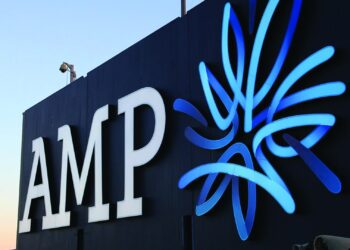AMP’s Australian Wealth Management (AWM) saw a reduction in net cash outflows from $2 billion in the first quarter of last year to $1.3 billion in the first three months of 2022, the company said in an ASX listing on Thursday.
Coupled with lower investment markets, the hefty net cash outflows influenced a $5.8 billion drop in the wealth division’s AUM to $136.5 billion.
AMP noted that while underlying cashflow trends continue to improve, the conclusion of AMP’s mandate as Woolworths’ corporate super provider is expected in the first half of 2023, and will generate an additional one-off impact of approximately $4 billion in cash outflows.
AMP Capital also suffered sizable net cash outflows of $1 billion reflecting asset divestments in closed-end infrastructure equity funds, alongside client redemptions from China Life AMP Asset Management (CLAMP) money market funds.
AMP Capital’s AUM of $52.5 billion in the first three months of the year compared to $177.8 billion in Q421, reflecting the completion of the sale of the Global Equities and Fixed Income (GEFI) business to Macquarie Asset Management, the sale of the infrastructure debt platform to Ares and the transfer of the Multi-Asset Group (MAG) to Australian Wealth Management, which all concluded in Q122.
In total, $125.0 billion in AMP Capital AUM was transferred during Q122 with these transactions.
Last month, AMP officially offloaded its AMP Capital asset management arm, making its pivot to banking and wealth management.
“We’re seeing positive signs of growth and momentum and have set a clear path to accelerate the transformation of AMP Limited with the announcement of the sale of Collimate Capital’s real estate and infrastructure equity businesses, enabling an increased focus on the growth of our retail banking and wealth businesses,” said AMP chief executive Alexis George.
“Our investments in technology to simplify and improve the lending experience has supported AMP Bank to deliver strong growth in a very competitive market, while also supporting customers to own their own home and invest in property,” Ms George added.
AMP Bank recorded a more successful first quarter, growing at twice the system growth with the total loan book increasing $0.5 billion to $22.6 billion in what AMP termed a “highly competitive market”.
Total deposits increased by $1.7 billion to $19.5 billion during Q122, reflecting a deposit to loan ratio of 86 per cent. Majority of flows were sourced from customer deposits, in line with the bank’s objective to further strengthen its liquidity.
Looking forward, Ms George said AMP will “continue to transform and simplify wealth management delivering better outcomes for our customers and advisers”.
“There’s continuing interest in the North platform from external financial advisers as we continue to expand its investment menu with new managed portfolios and ESG options for clients.”




Ms George, you have one hell of a battle on your hands to turn this around. I really hope you and your team can do it.
I’m waiting for the amp standard line “ we will vigorously defend this “
Financial Planning in Australia will take a step forward when AMP finally goes the way of the dodo and becomes extinct.
Delusional senior management continue to ‘ believe’ that non aligned advisers will use North. This ‘belief ‘ has permeated senior ranks for years – never going to happen
Sadly the management of AMP never speak to their leading advisers about what is happening in the market place ! for that matter they don’t speak not any of their Advisers .
There has been a lot of corporate super switching from AMP to union funds, prompted by AMP reputational issues.
However AMP’s corporate super products were generally very low cost, high performing, and had exceptional auto accepted insurance benefits. With reputational blood in the water, union super sales reps pounced using the usual deceptive garbage comparing their product’s fees and performance to 1990s era AMP retail funds, and ignoring the impact of lost insurance cover. Concerned employers were easily duped into switching.
Many employees will end up far worse off financially from the switch, particularly if they ever need to make an insurance claim.
I agree, though some of the larger industry funds like amp allow for an employer plan to have their own insurer.
Sooooo, they are going to end up being just a Bank, at the end of this ‘transformation”?
and a fairly ordinary one at that
I’d rather put my fingers in the car and slam the door. The service is still that terrible. Not to mention AMP are to blame for driving up the price of advice. You’ve got the AMP lie to ASIC 22 times forms, then there are the AMP charge fee for no services forms, and then the client has to sign the AMP no adviser and charge a fee form. Lots of forms I’ve named after AMP.
Another annus horribilis for AMP shareholders. Good luck to all the managers that got hefty bonuses over the last 10 years and then moved on. I pity the poor shareholders who should have been booting board members years ago.
The name AMP is poison. Surprised by the number of ads I see on TV were AMP is trying to rehabilitate their reputation. A waste of money
]Looking forward, Ms George said AMP will “continue to transform and simplify wealth management delivering better outcomes for our customers and advisers”.
Wow – I’d like to see that.